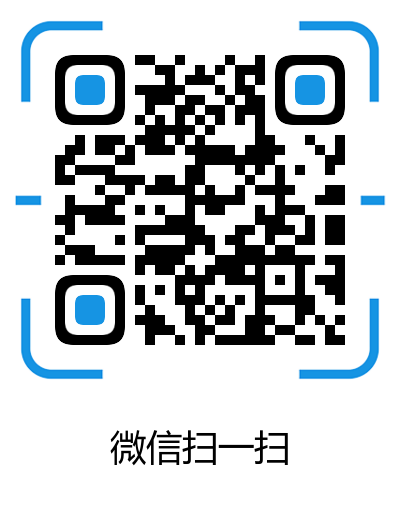were的原形是什么(广东高考147高分学霸,关于英语疑问句全笔记,我悟了)
大家好,今天给大家分享were的原形是什么,一起来看看吧。
英语陈述句和疑问句用法
一、基本概念
陈述句是陈述一个事实或者说话人的看法。它包括肯定句和否定句两种。陈述句在书写时句末用句号,在朗读时用降调。
疑问句是用来提问的句子,句末用问号。疑问句分为一般疑问句,特殊疑问句,选择疑问句和反义疑问句。
二、基本分类
陈述句 肯定句 疑问句 一般疑问句
特殊疑问句
选择疑问句
否定句 反义疑问句
三、用法详解
1、否定句
1)一看句中是否有be 动词(am,is are,was,were),如果有 在其后加 not, 并把原句中的some改为any。
例如:She is reading a book.---She is not reading a book.
There are some apples on the tree.—There are not any (=no ) apples on the tree.
2)二看句中是否有情态动词:(can ,could, may, must, will, would, should等)变化如同一中
说,not 仍然放在后。
例如: I can ride a bike.---I can not (=can’t) ride a book.
We will hold a sports meeting next Sunday.----We will not (=won’t) hold a sports meeting next Sunday.
3)三看句中是否有助动词:(have, has, had),变化如同前两说,not仍然放其后。
例如:We have finished the task.----We haven’t finished the task.
4)四变否定却看无,句中只有行为动(词),要提助动来完成。(don’t, doesn’t, didn’t)
例如:
(1)I want a new bike.--I don’t want a new bike.
(2)He wrote a letter to his pen-friend yesterday.--He didn’t write a letter to his pen-friend yesterday.
(3)She always takes good care of her patients. --She doesn’t always take good care of her patients.
当借助doesn’t和 didn’t 构成否定后,行为动词要还原为原形。
2、一般疑问句
1)一看句中有无be (am, is, are, was, were) 只需提前就可以。
例如: (1) She was a doctor five years ago.----- Was she a doctor five years ago?
(2) I am reading a book.---Are you reading a book?
2)二看句中谁当家,情态动词也最佳,提到句首不用问,例句强化说明它:
例如: (1) They can climb up the high mountain.-----Can they climb up the high mountain?
(2) I must finish my work this afternoon.----Must you finish your work this afternoon?
3)三看助动(have has had)存在否,放在句首别疑它:
例如: (1) The Greens have visited China already.---- Have the Greens visited China yet?
4)四若不见以上三,句首加上Do, Does, Did莫等闲,再想特例全会变:
例如: (1) They watch TV every night.--- Do they watch TV every night?
(2) We had a big dinner just now.---Did you have a big dinner just now.
(3) Her sister likes dan
cing.---Does her sister like dancing?
当把助动词does和 did提前构成疑问后,行为动词要还原为原形。
3、特殊疑问句
1)构 成:疑问词 一般疑问句
2)疑问词:what(什么), who(谁), whose(谁的), which(哪个),
when(何时), where(哪里), why(为何),how(怎样),
how long(多久,多长时间),how far(多远),how often(多久一次),how soon(多快,多久以后),how many(问数量-可数名词),
how much(问价钱;问数量-不可数名词),how old(问年龄)等。
3)解题步骤: step1:根据划线部分确定疑问词;
step2:将句子变作一般疑问句;
step3:去划线部分加问号。
4、选择疑问句
1)构成: 一般疑问句 or 另一个备选对象Did you stay at home or at school yesterday?
特殊疑问句 or 另一个备选对象Which would you like best, English, Chinese or Math?
2)回答: both/all/None/neither/either
备选项中的某一项
4、反义疑问句
1)定义:反意疑问句(即附加疑问句)是在陈述句后面附加一个简短疑问句,对陈述句所说的事实或观点提出相反的疑问,一般用于证实说话者所说的事实或观点。翻译为“是吗?/ 难道不是吗?/ 对吧?”
2)结构:陈述句 简短疑问句;注意以下几点:
a. 陈述句和简短疑问句在时态、人称、数上应保持一致。
b. 前肯后否,前否后肯。
He likes English, doesn’t he? 他喜欢英语,是吗?
He doesn’t like English, does he? 他不喜欢英语,是吗?
c. 简短问句的主语必须是人称代词。
d. 简短疑问句所用的提问词,就是前面陈述句变一般疑问句时所用的提问词(be动词/助动词/ 情态动词)。
e. 简短疑问句中的not必须缩写。
f. 当前面的陈述句为否定句时,回答中的Yes译为“不”,No译为“是”。(口诀:结
构不变,翻译变)
3)反义疑问句中的难点:
a. 若陈述部分含有no, not, hardly, never, few, nothing ,little,nobody,seldom等否定词或半否定词,其疑问部分要用肯定式:
He has few friends here, has he? 他在这儿几乎没什么朋友,是吗?
She said nothing, did she? 她什么也没说,是不是?
b. 若陈述部分含有带否定前缀的词im-,un-,dis-,疑问部分仍用否定式:
It is unfair, isn’t it? 这不公平,不是吗?
It is impossible, isn’t it? 那是不可能的,是吗?
c. 当陈述部分为为there be句型时,疑问部分仍用there作“主语”:
There was nothing in the room, was there? 房间里什么也没有,是吗?
d. 当陈述部分的主语是指示代词(this,that,these,those)时,疑问部分用it, they等代词:
That is a new car, isn’t it? 这是一辆新汽车,是吗?
e.当陈述部分的主语是复合不定代词时,若陈述部分的主语为somebody,someone, everyone, everybody, no one, nobody等复合不定代词,其反意疑问句的主语在正式文体中用he,在口语或非正式文体中通常用they:
Nobody was late, were they? 没有一个人迟到,是吗?
f.当陈述部分的主语是 something, anything, nothing, everything等复合不定代词时,其反意疑问句的主语要用it:
Everything is ready, isn’t it? 一切都准备好了吗?
Nothing is important, is it? 没有什么重要的,不是吗?
g.have作为动词的反义疑问句:
①have to 的短语,且只充当一般动词的作用,助动词为do, does,和普通的一般疑问句没有任何差别,提问还是用do,does引导。
We have to finish it, don’t we?
②当用have, has做助动词的时候,疑问句才用它们引导,如:
She has seen it, hasn’t she? 这里的助动词就是has
③当陈述部分有had better,或其中的have表示完成时态时,疑问句应用hadn’t等开头:
You’d better get up early, hadn’t you?
④其他情况句中有have时疑问句应用don&39;t have any sisters, does he?
但是在陈述句中用have/has/had got to来代替have/has/had to时,反意疑问句用have的相应形式。如:
①Ann has got to see a doctor, hasn’t she?
②You haven’t got to go to school on Sunday, have you?
2、陈述部分为祈使句的反意疑问句
1) 基本原则:若陈述部分为祈使句,疑问部分通常用will you:
Please help us, will you? 请帮帮我们,好吗?
Come with us, will you? 同我们一起去,好吗?
Don’t forget to post the letter, will you? 请别忘了寄信。
2) 当祈使句为Let’s…时,疑问部分总是用 shall we:
Let’s go there together, shall we? 我们一起去,好吗?
3) 当祈使句为Let us…时,若表示请求,疑问部分用will you,若表示建议,疑问部分用 shall we:
Let us know your address, will you? 请把你的地址告诉我们,好吗?
Let us go swimming together, shall we? 我们一起去游泳好吗?
3、含情态动词的反意疑问句
1. 基本原则:在通常情况下,当陈述部分含有情态动词时,疑问部分会重复前面同样的情态动词:
He can speak English, can’t he?他会说英语,是吗?
We shouldn’t go, should we? 我们不应该去,对不对?
2. 当陈述部分含有must时,要分两种情况:
① 若must表示“必须”或“有必要”,疑问部分用 mustn’t 或needn’t:
You must leave at once, mustn’t [needn’t] you? 你必须(有必要)马上离开,是吗?
但是若陈述部分有mustn’t表示禁止,疑问部分要must:
You mustn’t laugh, must you? 你不准笑,知道吗?
以上就是were的原形是什么的内容分享,希望对大家有用。

